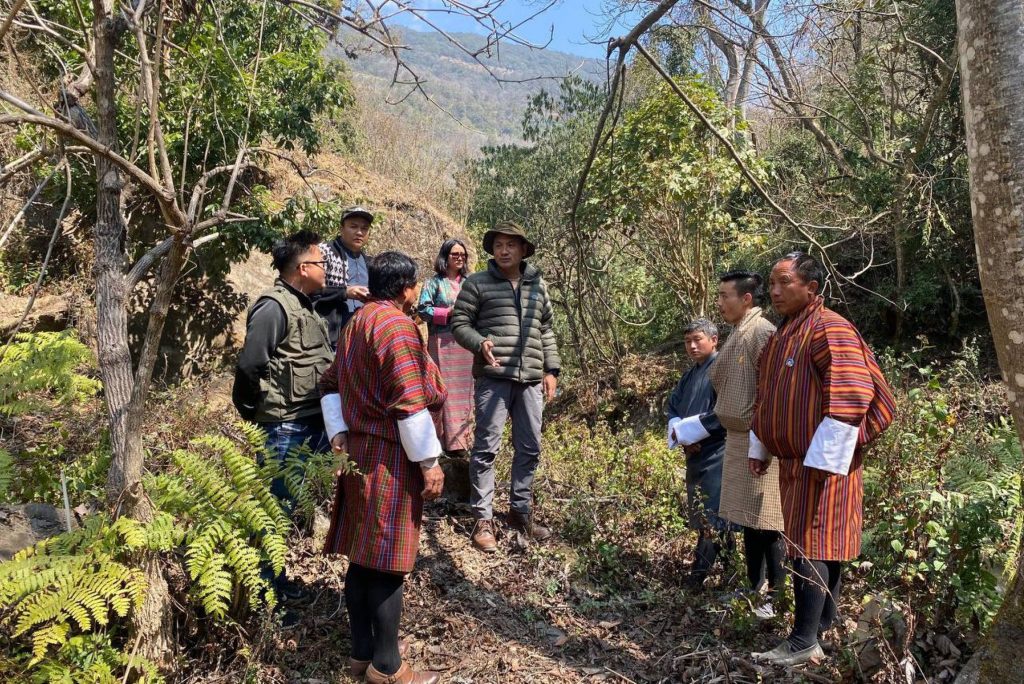A joint team from RSPN Bhutan and Thedtsho Gewog carried out the monitoring of #RWSS in Wangdue Phodrang District on March 6th, 2024. Currently, RSPN through the ongoing BMUV-IKI project is supporting two RWSS (Matalungchu and Wangjokha Chiwog, under Thedtsho Gewog).
The RWSS is expected to benefit 95 households. During the monitoring, local government officials provided updates on the progress of RWSS work at Matalungchu, while discussions on Wangjokha RWSS aimed at ensuring smooth implementation .This effort is part of a larger RWSS activity supporting 13 schemes across the White-bellied Heron Landscape, spanning Punakha, Wangdue Phodrang, Tsirang, Trongsa, and Zhemgang Districts.
We extend our gratitude to the Dzongkhag Administration of Wangduephodrang and Thedtsho Gewog Administration for their invaluable support and coordination, which is crucial for the success of this endeavor.
This project is funded by the Federal Ministry for the Environment, Nature Conservation, Nuclear Safety and Consumer Protection (BMUV), Germany through International Climate Initiative (IKI) with co-funding from MAVA Foundation, Switzerland and the Royal Society for Protection of Nature (RSPN).



Dechheling Gewog located under Pema Gatshel Dzongkhag is characterized by low-lying hills and a cluster of houses spread across the slopes and hilltops. Peling-Tso, a marsh lake, located at the valley bottom at 950m covers an approximate area of 34.219 hectares (85.547 acres) and is the source for Peling-chhu, which is the only perennial stream in the area. The stream, an outlet of Peling-Tsho/wetland is used by more than 200 households for drinking, washing, and feeding domestic animals. However, Peling-Tsho catchment has been declining over the years due to siltation, and access to sufficient and clean drinking water is a major problem in Dechheling Gewog mainly attributed to the loss of forest cover and watersheds. Rainwater is the main source of Peling-Tsho wetland and for drinking; thus, it is very important to trap rainwater for recharging of Peling-Tsho wetland and nearby springs.
As part of improving the restoration and protection of Peling-Tso for sustaining wetland ecosystem services (water and biodiversity), the Royal Society for Protection of Nature (RSPN) and Dechheling Gewog with technical backstopping by the RGoB through GEF-Small Grants Program of UNDP Bhutan Program Office funding constructed the 34 water collection ponds/trenches (61cm depth by 1m square) 5 numbers of Zabo systems (15m by 5m by 50cm) around Peling-Tsho catchment to recharge rainwater during the monsoon. In addition, the project also supported 86 Sintex Tanks (500 liters) and installed Roof-top Rainwater Harvesting Systems by 86 households under Gonpawong Chiwog. The establishment of water collection ponds/trenches, Zabo systems, and Roof-top Rainwater Harvesting Systems has helped in recharging groundwater and overcoming water shortages for household use and agriculture.
Copyright © 2026 RSPN All Rights Reserved